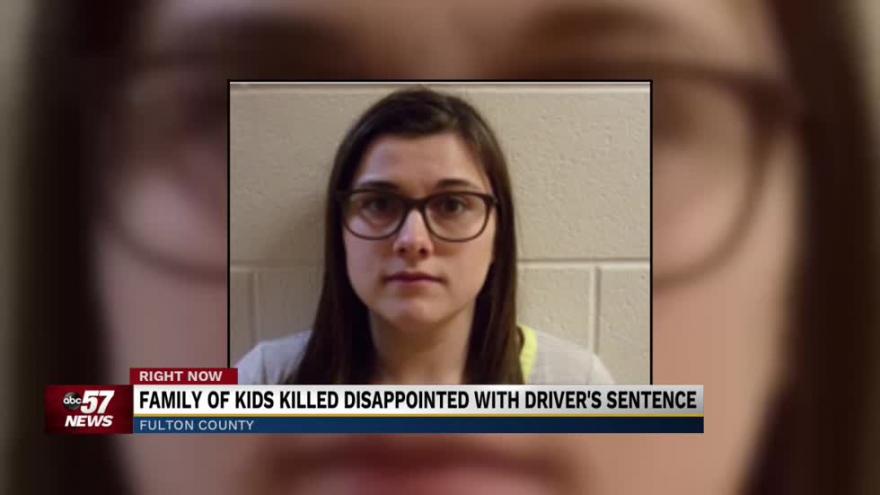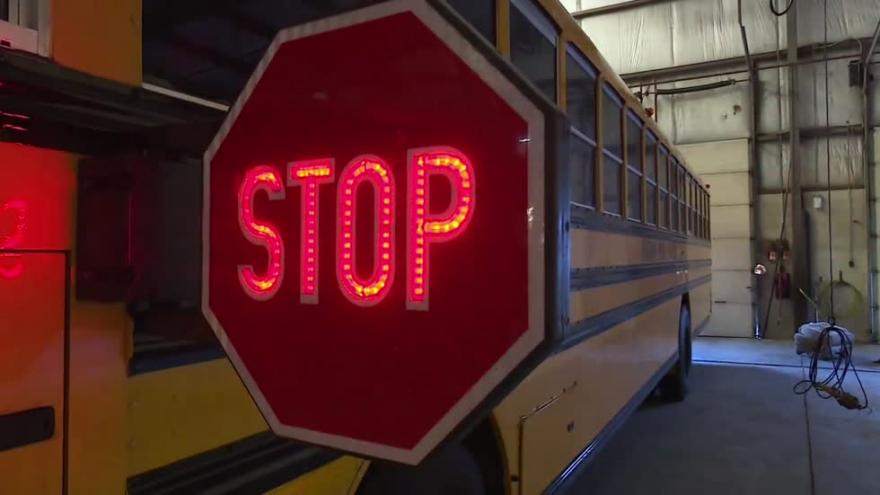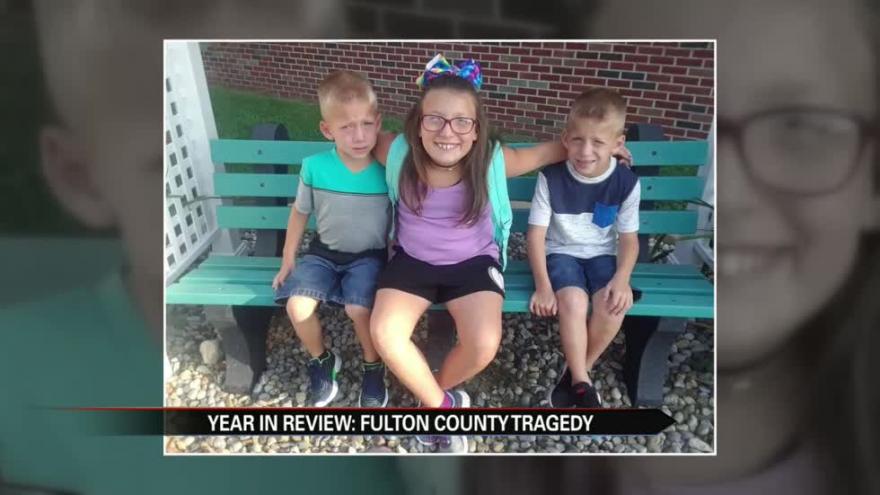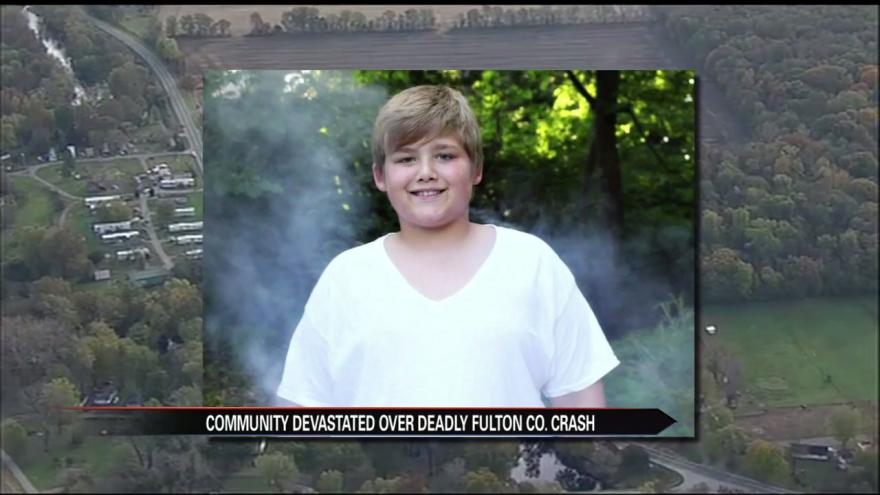NTSB issues report on Rochester crash that killed 3 students, injured one, on SR25
See Also
-
 Woman who killed 3 children, injured 1 sentenced to 4 years in prison
Woman who killed 3 children, injured 1 sentenced to 4 years in prison
-
 Rochester tragedy prompts Stop for School Buses Act
Rochester tragedy prompts Stop for School Buses Act
-
 Year in Review 2018: Three students killed at bus stop in Fulton County
Year in Review 2018: Three students killed at bus stop in Fulton County
-
 Driver in fatal crash told police she didn't realize it was a school bus
Driver in fatal crash told police she didn't realize it was a school bus
-
 Family of child who survived crash on SR25 issues statement
Family of child who survived crash on SR25 issues statement
A hearing had been scheduled for April 7, but because of the COVID-19 pandemic, the NTSB is moving to an electronic process to vote on the investigative report that includes the probable cause, findings and safety recommendations.
Just before 7:15 a.m. on October 30, 2018, Alyssa Shepherd was traveling southbound on SR 25 when she struck four students who were crossing SR 25 to board their school bus, which was stopped in the northbound lanes with its lights activated and stop arm extended.
Xzavier Ingle, 6, Mason Ingle, 6, and Alivia Stahl, 9 died at the scene. A fourth student, Maverik Lowe, suffered severe injuries.
Shepherd was sentenced to four years in prison, 3 years home detention and 3 years probation for 3 counts of reckless homicide, one count of reckless driving causing bodily injury (an amended charge) and criminal recklessness (an amended charge).
The findings of the NTSB report include:
- The cause of the crash was Shepherd's failure to stop for the school bus even though its lights were activated and the stop arm was extended.
- A contributing cause was the Tippecanoe Valley School Corporation's "inadequate safety assessment of school bus routes" which required students to cross a roadway with a 55 mph speed limit.
- The school district had no clear policy for school bus drivers for determining when it was safe for students to cross a road to board the bus.
“When our school-aged children walk out the door to meet the school bus in the morning, parents have the right to know that everything possible is being done for their safety,” said NTSB Chairman Robert Sumwalt. “This crash tells us that we can and should do more. While the school bus is still the safest way for students to travel to and from school, it is imperative that other drivers on the roads obey the law and stop for a school bus that is loading or unloading students,” said Sumwalt.
The investigation identified the following safety issues:
- Deficiencies in establishing safe school bus routes and stop locations. The school bus route for the bus involved in this crash required students to cross a 55 mph roadway to board the school bus in the dark, early morning hours. A safe school bus route should avoid requiring students to cross high-speed roadways. Creating safe routes requires that those who develop the routes be adequately trained to assess route safety. Moreover, school bus routes should be evaluated periodically for hazards, and when individuals familiar with the route identify hazards, there should be a mechanism by which the dangers can be reported and tracked. Finally, when students must cross a roadway to board a bus, drivers and students must know and use consistent procedures to reduce the risk of the crossing.
- Failure of other drivers to stop or otherwise respond safely when approaching a school bus that is stopped with its warning lights on and stop arm extended.Although motorists are required by law to stop for a school bus that is stopped with its warning lights flashing and stop arm extended, many motorists fail to do so; they drive past the school bus and create a dangerous situation for any student who might be 2 crossing the roadway. Education and enforcement can be used to reduce motorists’ illegal behavior.
- Need for greater use of technologies to prevent collisions with, and mitigate injuries of, student pedestrians, including vehicle-to-everything (V2X), pedestrian automatic emergency braking, and school bus safety-enhancing technologies. Although routes that require a student to cross a roadway to board a school bus (or to return home after disembarking) should be minimized, there will continue to be some routes where students will have to cross a roadway. In such cases, technology may help to prevent crashes or mitigate any injuries sustained by students.
The NTSB issued 12 safety recommendations as a result of the investigation.
To the National Highway Traffic Safety Administration:
1. When evaluating safety self-assessment reports from entities testing automated driving systems on public roads, evaluate how effectively the entities include school bus operations in their plans.
2. Evaluate the effectiveness of technologies designed to reduce the incidence of illegal school bus passings, and publish and disseminate the evaluation results.
To the states of Alaska, Arizona, California, Colorado, Delaware, Florida, Hawaii, Iowa, Kansas, Louisiana, Michigan, Minnesota, Missouri, Montana, Nebraska, Nevada, New Hampshire, New Jersey, New Mexico, North Dakota, Ohio, Oregon, South Dakota, Texas, Vermont, and Wisconsin; the commonwealths of Kentucky and Massachusetts; and the District of Columbia:
3. Enact legislation to permit stop arm cameras on school buses to capture images, and allow citations to be issued for illegal school bus passings based on the camera-obtained information.
To the Indiana Department of Education:
4. Supplement your training program for school transportation directors with a module on how to assess the safety and risks of school bus routes and stops, according to best industry practices.
5. Require local school transportation directors and others involved in evaluating school bus routes and stops in Indiana to complete the training module on the safety and risks of routes and stops recommended in Safety Recommendation [4].
To the National Association of State Directors of Pupil Transportation Services, National Association for Pupil Transportation, and National School Transportation Association:
6. Inform your members of the circumstances of the Rochester, Indiana; Baldwyn, Mississippi; and Hartsfield, Georgia, crashes, and urge them to minimize the use of school bus stops that require students to cross a roadway (especially a high-speed roadway) and to, at least annually, and also whenever a route hazard is identified, evaluate the safety of their school bus routes and stops.
7. Remind your members to ensure that school transportation directors and others involved in evaluating school bus routes and stops complete training on how to assess the safety of school bus routes and stops, according to best industry practices.
8. Advise your members to train their school bus drivers and students on crossing procedures, including the crossing hand signal and the danger signal, which are to be used when a student roadway crossing cannot be avoided.
9. Urge your members to continue to coordinate with local law enforcement agencies to conduct educational and enforcement activities aimed at reducing illegal school bus passings.
To the International Association of Chiefs of Police, National Sheriffs’ Association, and National Association of School Resource Officers:
10. Inform your members of the fatal Rochester, Indiana; Baldwyn, Mississippi; and Hartsfield, Georgia, crashes, and encourage them to continue to work with local school districts to conduct educational and enforcement activities to reduce illegal school bus passings.
To the Tippecanoe Valley School Corporation:
11. Implement a process to track school bus driver and parent (or caregiver) complaints regarding the safety of school bus routes and stops, as well as any other safety concerns about bus operations, from initial submission of an issue to its resolution.
12. Train your school bus drivers and students on crossing procedures, including the crossing hand signal and the danger signal, which are to be used when a student roadway crossing cannot be avoided.

